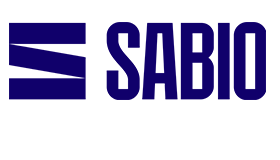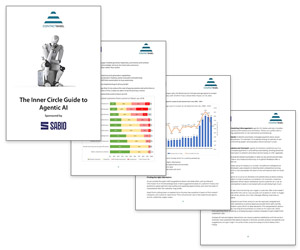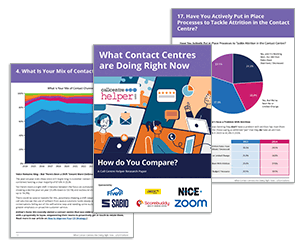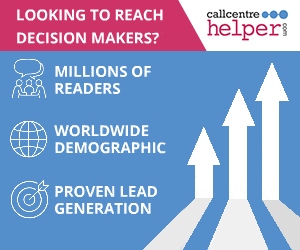Scott Doherty at Sabio gives some insights into how you can tackle the issue of high call abandonment rates.
Tip 1: Implementing Strategic Call-Back Solutions and Queue Management
One of the most effective ways to reduce call abandonment rates in the contact centre is through the strategic use of intelligent call-back solutions, paired with optimised queue management.
Today’s advanced contact centre platforms make it possible to offer customers the choice of receiving a call-back instead of waiting on hold – a move that significantly enhances customer experience while lowering abandon rates.
Sabio Group have seen first-hand how powerful this approach can be. The partnership with ESP Group is an example – through the introduction of a call-back-in-queue initiative, they achieved a 5% reduction in call abandonment and a 20% drop in average wait times.
These improvements are driven by a fundamental shift in customer perception: offering a call-back gives customers a greater sense of control, alleviating frustration and reducing pressure on the queue during peak periods.
However, it’s important to recognise that the success of a call-back strategy hinges on robust workforce management. Accurate forecasting and effective scheduling are essential to ensure that call-backs are honoured promptly, particularly after demand peaks.
Without this alignment, organisations risk simply displacing demand – and in doing so, frustrate customers further by failing to follow through on promised call-backs. This can lead to a damaging cycle of declining service levels and customer trust.
It’s also critical that call-backs are not viewed as a sticking plaster for broader operational issues, such as chronic understaffing or inadequate scheduling. Instead, they should be embedded as part of a comprehensive workforce planning strategy – a proactive tool to enhance flexibility and customer satisfaction, not a reactive measure to cover systemic shortfalls.
Used thoughtfully, call-backs can deliver real value to both customers and the business – but only when supported by strong planning and execution behind the scenes
Tip 2: Leveraging Automation and Self-Service Technologies
Automation, particularly through interactive voice response (IVR) and self-service channels, offers one of the most effective levers for managing demand and reducing abandon rates in the contact centre. By enabling customers to resolve straightforward queries themselves, organisations can significantly lower inbound contact volumes, reserving agent time for interactions that truly require a human touch.
A strong example of this in action comes from recent work with ENGIE. In a major transformation programme involving the migration of over 4,600 agents across four business entities, they deployed advanced IVR and self-service automation.
The results were compelling – substantial reductions in call volumes, improved focus on complex customer needs, and ultimately, better service quality. Crucially, this also drove a marked reduction in abandon rates, while simultaneously helping to optimise resource allocation and staffing costs.
What’s more, the transformation was delivered two months ahead of schedule, proving that with the right technology, clear strategy, and effective implementation, it’s possible to deliver rapid, measurable improvements in both operational efficiency and customer experience.
However, it’s important to understand that automation isn’t a “one and done”. Too often, organisations invest in self-service tools but fail to embed them within a continuous planning and change lifecycle.
Customer behaviours evolve, contact reasons shift, and without regular review and refinement, automated systems risk becoming outdated – or worse, a source of customer frustration.
From a planning perspective, automation must be treated as a living, breathing part of your operation – consistently reviewed alongside forecasting, scheduling, and change activity.
Without this, you risk undermining the very benefits automation is designed to deliver, and falling short of both customer and business expectations.
When done right, automation is a powerful ally – but its long-term success depends on close alignment with your planning processes and an ongoing commitment to continuous improvement.
This blog post has been re-published by kind permission of Sabio – View the Original Article
For more information about Sabio - visit the Sabio Website
Call Centre Helper is not responsible for the content of these guest blog posts. The opinions expressed in this article are those of the author, and do not necessarily reflect those of Call Centre Helper.
Author: Sabio
Reviewed by: Rachael Trickey
Published On: 10th Jul 2025
Read more about - Guest Blogs, Sabio






 Sabio Group is a global digital customer experience (CX) transformation specialist with major operations in the UK (England and Scotland), Spain, France, Netherlands, Malaysia, Singapore, South Africa and India. Through its own technology, and that of world-class technology leaders such as Amazon Connect, Avaya, Genesys, Google Cloud, Salesforce, Twilio and Verint, Sabio helps organisations optimise their customer journeys by making better decisions across their multiple contact channels.
Sabio Group is a global digital customer experience (CX) transformation specialist with major operations in the UK (England and Scotland), Spain, France, Netherlands, Malaysia, Singapore, South Africa and India. Through its own technology, and that of world-class technology leaders such as Amazon Connect, Avaya, Genesys, Google Cloud, Salesforce, Twilio and Verint, Sabio helps organisations optimise their customer journeys by making better decisions across their multiple contact channels. 












